If children were to design and build a train station, it might well turn out to be Grand Central Terminal. It’s big, and it has all kinds of cubbyholes, caverns, and passageways; a magical ceiling full of stars; places with models, books, and toys; great food from hot dogs and chili to all kinds of chocolate (and fancy stuff for adults, too); and best of all, trains…lots of them. The terminal contains places to hear echoing whispers, watch dancers, and get up high on the steps and look down. It appeals to all of the senses.
Best of all, it’s easy to carve out various adventures, pleasures, and delights according to the mood and time – whether you have an afternoon or only 20 minutes before a train. In other words, it invites being in the “present moment” – which is, after all, the specialty of childhood.
My own treasures often tend to be of the “just walk around and explore it” variety.
On the occasion of Grand Central Terminal’s 100th birthday – it opened a century ago on Feb. 2, 1913 – Mindfulwalker.com looks at some of its fabulous design, architectural history, and treasures. Beginning with an examination of how New York City almost saw the terminal destroyed, Part I focused on a walk around and exploration of Grand Central’s Main Concourse. This segment features five more gems starting at the concourse and in pockets away from it.
West and East Staircases
Successful public spaces are as much about how you relate to them and feel as you travel through as about their beauty. The West and East Staircases invite walking civilly, taking pauses, and savoring the view into the Grand Concourse. Watch people interact with them, and you will see it is far from the “herd” instinct that all too often takes over in other staircases at transit stations. The West Staircase, in particular, is one of my favorite Grand Central places because of its striking entrance from Vanderbilt Avenue (though many Grand Central lovers likely love the East Staircase as much).
The West Staircase
At times, slowly walking either of the staircases can feel like pausing to take in a view or performance – it’s graceful and dramatic – and this is no accident. The architects of Grand Central designed two grand staircases in the Beaux Arts style, though only the West Staircase was built during the original construction a century ago. The architects modeled the West Staircase after the Grand Staircase in the Palais Garnier, Charles Garnier’s Paris opera house. The steps are pink marble from a Tennessee quarry, while the staircase railings are of ivory-colored Botticino marble from Italy’s northern Brescia region.
It’s uncertain why the East Staircase wasn’t constructed originally. More than eight decades later, the MTA Metro-North Railroad’s 1990s makeover completed what the architects originally had conceived, with a second stairwell – the East Staircase. It brought more beauty, elegance, and accessibility in place of the Chemical Bank automated teller center that was there. The architects located the original marble from quarries in Tennessee and Italy. Those doing the renovation had to be sure that the East Staircase would not be exactly like the west one, to telegraph to future generations, especially archaeologists, that the second one was a modification. Hence, the East Staircase’s balustrades are less ornate
The Graybar Passage Clock
The Graybar Passage, from the Grand Concourse, has always spoken to my delight in a form of urban caving, honed in my teen-age years in the arcades and passageways of Downtown Pittsburgh. In the Graybar Passage are a ceiling mural by Edward Trumbull, small storefronts, classical pilasters and curved ceilings, and a clock that is timeless.
Carved in the marble underneath the clock are the words “Eastern Standard Time.” This term memorializes forever the role of the railroads in the late 19th century in bringing order to the chaos of travel schedules in the United States, due to more than 100 different time zones. Because of train crashes, missed connections, and similar problems, the railroads, with New York Central playing an important role, petitioned Congress to set up time zones so they could create printed schedules. Congress balked, and so the railroads went ahead and established the main time zones as we know them today. New York Central, proudly underscoring its accomplishment, had the words carved under the clock.
The Station Master’s Office
With its benches and roominess, the Station Master’s Office makes waiting a pleasure. (The Station Master is responsible for the workings and comfort of the station.) This area for ticketed passengers is not a place where you will curse that you missed the earlier train. In fact, it’s a counterpoint to the scurrying that is New York, and it has none of the transient, “we-don’t-want-you-to-get-too-comfortable” feeling of various transit waiting spaces these days. The room has ample oak benches in the old train station style, which were in Grand Central’s former Waiting Room (now Vanderbilt Hall). Clean and spacious, it’s a refreshing place if the city’s crowds or harsh weather have sapped your energy. This space is part of the success story of MTA Metro-North’s massive renovation of Grand Central in the 1990s.
Detail from Roberto Juarez’s multimedia work “A Field of Wild Flowers”
The bright flowers and texture of Roberto Juarez’s 1997 multimedia work, “A Field of Wild Flowers,” found along three walls just above the benches, also generate feelings of “ahhhhhhhh.” The collage is full of purple, fuchsia, pink, olive and light green, and yellow flowers, fruit, and garlands, in wide circles that convey lush growth. The fragile work has layers of gesso, underpainting, urethane, and varnish, and Juarez used rice paper and a dusting of peat moss for added texture and beauty, according to the MTA Arts for Transit program. The surroundings of Juarez’s work suggest quiet thoughts, reading, and daydreaming.
Grand Central Terminal Model
I marvel at how many people walk by and seem to not notice the creative and superb replica of Grand Central Terminal that is inside the entrance to the Station Master’s Office. Grand Central is showcasing this miniature as part of its centennial celebration. The replica is one of 140 iconic buildings and structures, plus some wonders of the world, that the New York Botanical Garden features in its Holiday Train Show from late November to January.
Grand Central is one of the models of botanical design and architecture that Paul Busse and his imaginative team at Kentucky-based Applied Imagination have created for the train show. The not-so-small miniatures are made of twigs, bark, moss, stems, seeds, pine cones, and other elements of plants art. The more you look at the Grand Central replica, the more intricacies you see: columns of tiny sticks; variegated stone walls; the walls of glass with light showing within; and a whimsical rendering of the sculpture atop Grand Central with Mercury, Minerva, and Hercules.
Sirshasana Chandelier, Grand Central Market
How can someone make 3,000 pounds appear so delicate? That sense of awe comes as I consider “Sirshasana,” the sculptural chandelier with inverted roots that is at the terminal’s east end, the Lexington Avenue entrance to Grand Central Market. “Sirshasana” is named for a yoga headstand posture, an inverted olive tree with golden roots, and the term means “feet to heaven.” Sculptor Donald Lipski created the chandelier for the MTA Arts for Transit program, which installed it in 1999 as part of the opening of the Grand Central Market. Jonquil LeMaster of Portland-based Jonquil-Design built it.
It’s fitting for this market, too. If the tree’s feet are to heaven, its link is also to the ground upon which we depend and dwell together. Its many undulating branches and sturdy roots produce a strong sense of connection to nature and the Earth, the source of the market’s foods, be they spices from Africa, tomatoes from local farms, or hibiscus tea from Asia. Reaching out 25 feet, the chandelier’s branches hold 5,000 Austrian crystal pendants for the olives. These pendants catch the light and shadows in differing ways during the day, and the MTA intended to fashion a space, with its eastern-facing glass, that would allow morning light to permeate the area. The branches form smaller sculptures of varied shapes.
“Sirshasana,” at Grand Central Market’s Lexington Avenue entrance
The piece also reflects ancient and multicultural traditions. Lipski looked to Hindu and Greek lore and chose an olive tree because it symbolized “freedom and purity” to the ancient Greeks, the MTA’s description notes. He was also mindful of future generations in conceiving art of lasting value for a public space. In an interview for Newsday at the time of the installation, Lipski said, “I can see my grandchildren’s children looking up at it. It’s going to be here for a long time.”
Such a vivid sense of future generations, mixed with a storied history, pertains to all of Grand Central Terminal. It’s a jewel where children hopping on the West Staircase, gazing up at the Sky Ceiling, or having a hot dog in the Lower Concourse will one day soon enough be rushing to meet a date, having a cocktail, appreciating its breathing space as they catch a train after a hectic day, setting off from here on their own vacations, or pondering the grandeur of its immense Grand Concourse. Then one day, they, too, will show their own grandchildren Grand Central’s depths, nooks, and wonders.
Grand Central: Events and Further Exploration
Part I of Mindfulwalker.com’s 100th anniversary series on Grand Central delved into the history, special places, and qualities of the Grand Concourse:
Mindful Walker: The Treasures of Grand Central at 100, Part I
Grand Central will have additional events, New York Transit Museum exhibits, multimedia experiences, and other programs in 2013 to mark the centennial.
Grand Central: Events
To learn more of Grand Central’s architectural history, its features, and more of its secrets as you walk around the terminal, consider the MTA Metro-North Railroad’s own audio tour.
The sight (and smell and taste) of spices at Grand Central Market are an antidote for any dreary day.
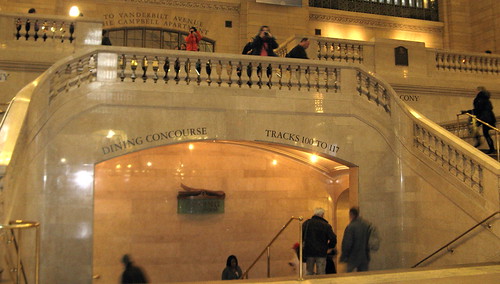
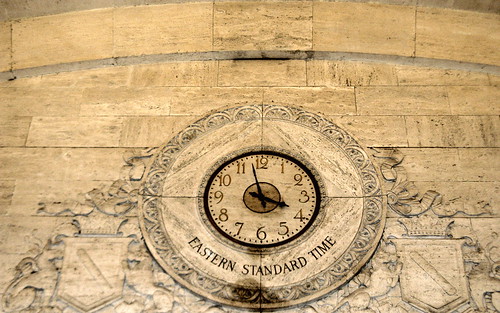
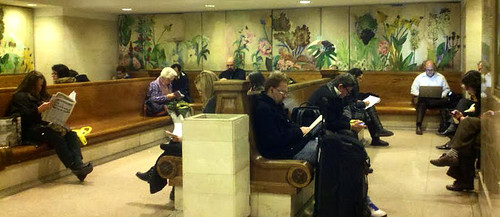
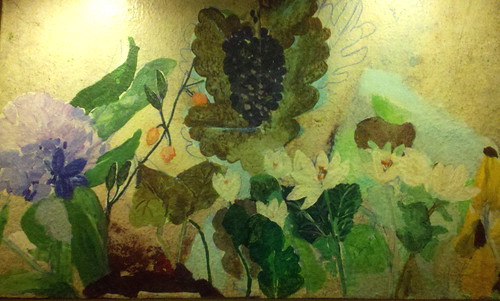

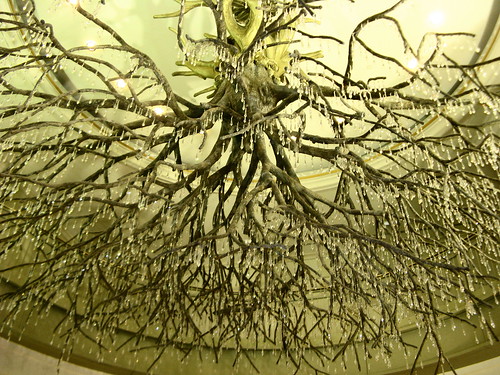





Thankfulness to my father, who informed me concerning this Web site. This blog is genuinely remarkable.